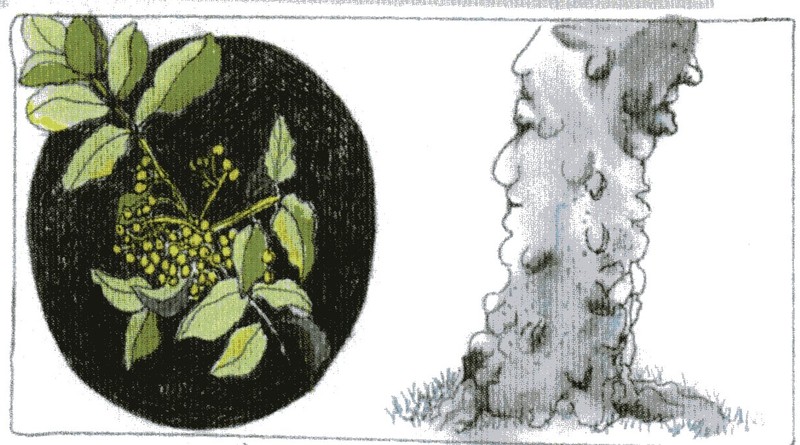Hercules Club
Introduction
Text-to-speech Audio
The bark of the Hercules club was chewed as a home remedy for toothaches. Its name comes from the distinctive bumps on the trunk.
Images
Hercules Club in Pioneer Cemetery
.jpg)
Close-up of the Hercules Club's unique trunk
.jpg)
Illustration of Hercules Club by local artist Ann Bittick

Illustration of Hercules Club by local artist Ann Bittick
.jpg)
Backstory and Context
Text-to-speech Audio
Resembling more of a tall shrub, the Hercules club (or prickly ash) is often confused by name with the Devil’s Walking Stick, although the Hercules club has distinct large bumps on its twisting trunk compared to the broken ridges and large leaf scars on the more vertical Walking Stick, and spread-out branches compared to the walking stick's umbrella shape. The other names for the Hercules club are “toothache tree” and “tingle tongue,” as chewing on a twig or piece of bark would cause the gums and tongue to go numb, which made it a popular toothache medicine for Indigenous Americans and later pioneer settlers.
Sources
Branches In Time: Notable and Historic Trees of Old Washington Historic State Park. Little Rock, AR. Arkansas State Parks, 2001.
Historic Washington State Park
Historic Washington State Park
Historic Washington State Park
Historic Washington State Park
